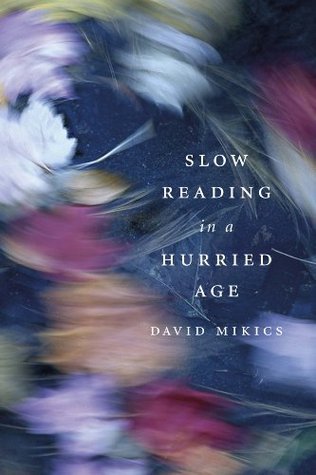What do you think?
Rate this book


331 pages, Kindle Edition
First published October 8, 2013
«فإن الكتابة السيئة، ومجرد تجميع جمل من الشبكة العنكبوتية مع بعض التغييرات أو الإضافات من عند المرء نفسه، تسير جنبا إلى جنب مع القراءة السيئة.»
«إن الرغبة في الاستغراق بأي شيء هي أحد الأشياء التي تُعرّف ما يعني أن تكون إنسانا ناضجًا.»ثمّ خلال الفصل الثّاني الغنيّ جدّا من الكتاب، يطرح ديفيد ميكيس أربع عشرة قاعدة لما سمّاها بـ"القراءة المتأنية".. مرفقة بالكثير من الاستطراد والأمثلة